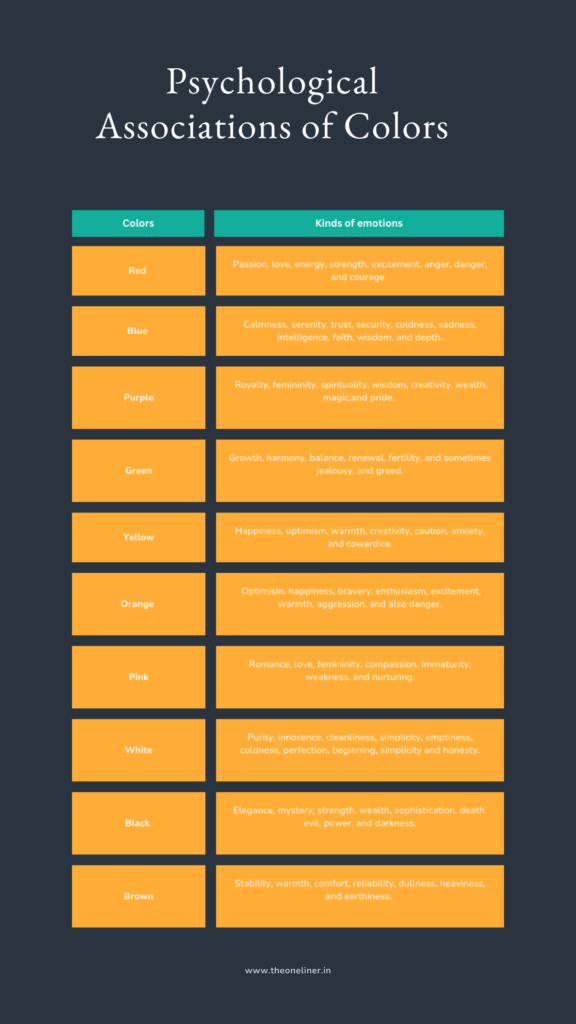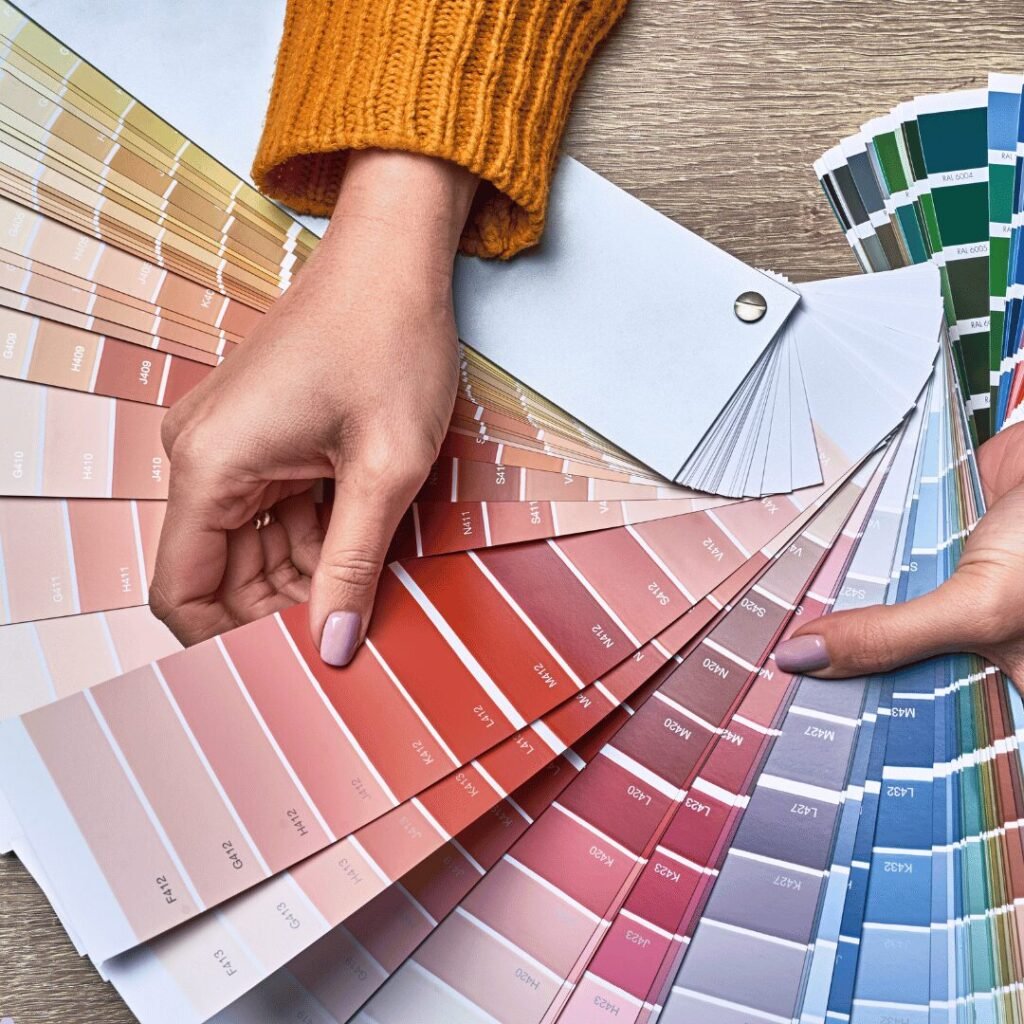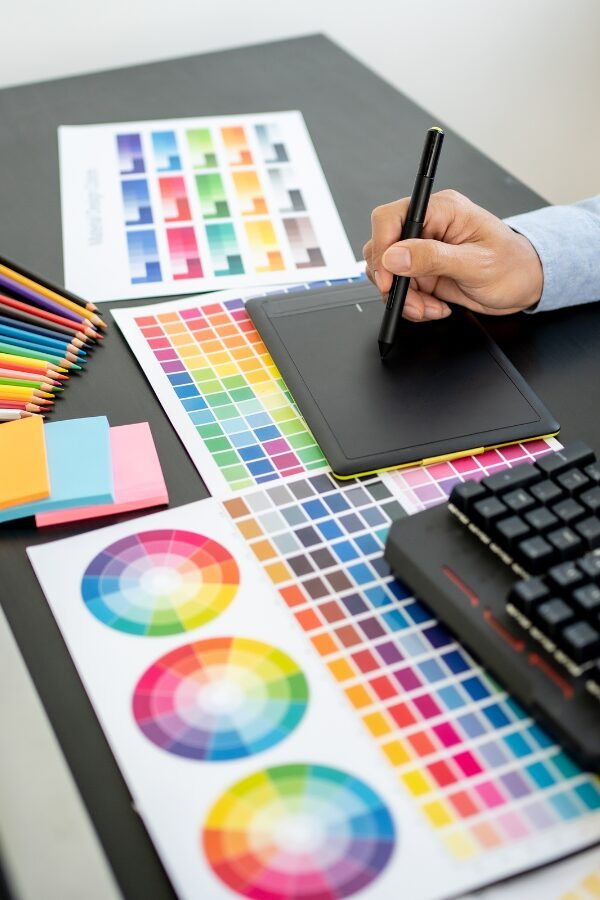Colors influence all: Learn Psychological Impact of Colors on Consumer Behavior
Aditya Rana
May 08, 2024. 4 minute Read
You know what? Sometimes we judge a book by its color, but not the cover. The combination, quantity, and the aesthetics of colors make us grab that book for at least once.
Colors influence all, but how?
Color Theory
Color Theory is a study of various colors, patterns, and how they can be combined in a harmony. This study of colors embraces the concepts such as color wheel, and color psychology. Almost every designer uses a toolkit such as color wheel or use color psychology to create right balance be it in your living room, your bed sheets or even in any illustration, designers take color theory quite seriously one can say!
Even our graphics designer, Ekta says that, “There are groups of colors that compliment each other; if the colors are not used wisely, they often look too bad in the final illustration, in fact they never look good.”
But how do artists and designers communicate their thoughts, and information with us?
Colors have to lot to tell and Convey information
Here comes the concept of color psychology!
Every color has a story; be it red, blue, purple, pink, yellow or green.
For example, the color Red!
The color red represents a pause, some danger, and end. We usually see it on traffic lights.
The emotion that a color evokes, depends on its use. For instance, the color green is widely used in the signal lights which represents safety or the way is clear to go.
Colors convey messages through connection with emotions. For example, red signifies passion, love, danger, excitement, blue evokes deepness, sadness, calmness and white inspires peace, calm, and simplicity.
Colors can Influence your Decisions as well
Color evokes different emotions according to the color palate, and combinations.
In marketing, brands always use colors to grab people’s attention. Colors prepare emotions that subconsciously affect decision making.
For example, Blue represents trust, security and confidence. Many reputed brands use the color blue because it expresses reliability, and pulls out a sense of trust towards the brand. Brands such as Unilever, Ford, Dell, hp, visa, Facebook, LinkedIn and insurance companies use the color blue.
You will be fascinated about the connection between how your mind and colors are related to each other and how our mind connects them with certain kinds of feelings.
Neurobiological Basis of Color Perception
Color perception has a bit of a complex neurological base which defines the connection between our eyes and brain.
We will start with eyes, who have photoreceptors, rods that differentiate between light and dark. Then comes Cones, which are sensitive to color. Cones simply detects three wavelengths, blue which is short wavelength, green which is medium, and red which is long. Hence, it allow us to recognize colors.
This is why RGB (Red, Green and Blue) are primary colors.

Applications in Design and Communication
Often colors in every design evokes people’s certain emotions and influences their decision making when they see certain color patterns and visual elements. You will find numerous application of colors in various field such as:
1. Marketing and advertising
In the field of marketing and advertising, we often see brands and companies using vibrant colors like yellow for their product and services. Such colors can be used for grabbing people’s attention and influencing their decisions.
2. Branding
Brands use colors and their patterns smartly that conveys their values, and reliability. Every brand uses colors strategically that differentiate them with their competitors.
Katie Hart, who is a Neuromarketing expert says, “Interestingly, the color blue is now often associated with communication too, which may derive from these feelings of security and safety.”
3. Web and Graphic Designs
Websites and graphics designs we see on the internet and social media are designed with such colors that creates visuals and grabs our attention. These designs include elements, typography, and various shapes that support their motive and communicate accordingly.
At the end of the day, remember, colors can influence our mood and emotions which can improve our overall well-being.
But how?



Colors Promote Overall Well-Being Of Individuals
Have you ever noticed why our mood suddenly inclines towards peace and joy whenever we connect with nature. It is not just because of fresh air and sunlight. It is the blend of everything else and colors that makes the difference.
Otherwise, who likes black and white nature!
Jokes apart!
Here is how color improves our overall well being.
1. Promotes Calmness and Relaxation
Colors such as blue, green, white, yellow, and pink embrace calmness and relaxation. You can see these colors in nature, homes, meditation spaces and even in temples that soothe the atmosphere.
2. Elevates Mood
Bright colors such as yellow, orange, pink elevates moods and spreads happiness, energy and excitement. These colors are frequently used in amusement parks, and for making toys.
3. Helps in Reducing Stress and Anxiety
Colors can reduce stress and anxiety through their calming effects on our brain. Colors such as, green, pink and especially blue are very effective in reducing stress and anxiety. These colors elevate mood and create a sense of tranquility and peace.
4. Improve our Creativity and Productivity as well
Have you ever wondered why our schools, colleges and offices use such colors that are bright and vibrant such as yellow, orange, and purple? Because these colors are associated with creativity, calmness, joy, and excitement. Colors provide an interesting environment that helps children and people in creativity and productivity.
Color too reflects your Personality as well!
As much as we have learned about colors till now, our understanding of colors goes far beyond our visual appeal. Colors have the power to influence our personalities. The colors we chose for our bedroom, in our clothing, or environment reflects our thoughts and our emotions.
Take the color red, for our example, its composition and bold hue reflects energy, passion, love, and anger. Similarly, every color carries its own psychological effect that deeply shapes our perceptions, and character.
According to a research on Personality Trait and Color Preferences, our color choices can influence our personality. The research was done on students and resulted in personality differences between subjects who chose dark colors such as brown, gray, and black and the subjects who preferred bright colors like, red, and yellow. The study found that preference of dark colors inclined towards the traits of introversion, and anxiety. And, the other side was more inclined towards aggression, and energy (who chose bright colors).
Final Thoughts
In a nutshell
Colors are not just for visual representation. They influence our decisions and personalities. From conveying information to the realm of well-being, colors are a crucial part of our lives.
So embrace colors and harness colors for vibrance and calm to shape your character for a positive change.
Subscribe to new post
The One Liner
Useful Links
Order Related Queries
Useful Links
Order Related Queries



